Lead-up to a Nation… as reported in the newspapers of the day (Intro & Sept., 1775)…
October 3, 2025 by GuyHeilenman · Leave a Comment

British News Delayed – Lead-up to a Nation (E5)
Lord Dunmore and Colonial Unrest – Lead-up to a Nation (E6)
Patrick Henry – Lead-up to a Nation (E7)
Benjamin Franklin – Lead-up to a Nation (E8)
We hope you are enjoying this year-long trek to the 250th anniversary of The United States through the eyes of those who were fully engaged, first hand. As mentioned previously, all accounts are rooted in what they read in the newspapers of the day.
“History is never more fascinating than when read from the day it was first reported.” (Timothy Hughes, 1975)
The many views of Niagara Falls – inspirating wood-cut illustration…
September 26, 2025 by Laura Heilenman · Leave a Comment
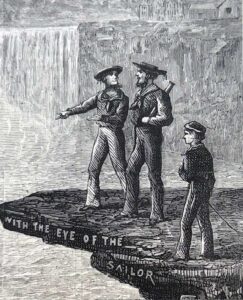 Decades ago, when my husband and I called Lancaster County, Pennsylvania, our home, we were immersed in a world where the Amish community was a constant presence – their simple way of life woven into the fabric of our daily existence. For fourteen years, we lived among the rolling farmlands, the clip-clop of horse-drawn buggies, and the quiet resilience of a people who shunned modern conveniences. Yet, despite this proximity, we rarely partook in the activities that drew countless visitors to Lancaster County’s doorstep. We never sat at an Amish family’s kitchen table, savoring a meal steeped in tradition. We never climbed aboard a buggy for a leisurely ride through the countryside, nor did we ever step foot in Dutch Wonderland – that colorful amusement park that beckons tourists with its promise of family-friendly thrills.
Decades ago, when my husband and I called Lancaster County, Pennsylvania, our home, we were immersed in a world where the Amish community was a constant presence – their simple way of life woven into the fabric of our daily existence. For fourteen years, we lived among the rolling farmlands, the clip-clop of horse-drawn buggies, and the quiet resilience of a people who shunned modern conveniences. Yet, despite this proximity, we rarely partook in the activities that drew countless visitors to Lancaster County’s doorstep. We never sat at an Amish family’s kitchen table, savoring a meal steeped in tradition. We never climbed aboard a buggy for a leisurely ride through the countryside, nor did we ever step foot in Dutch Wonderland – that colorful amusement park that beckons tourists with its promise of family-friendly thrills.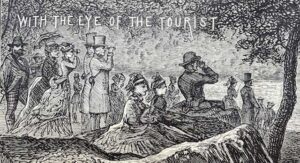
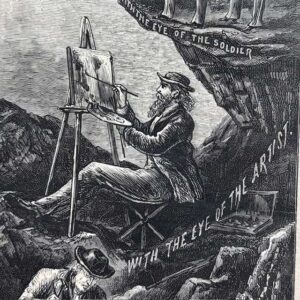
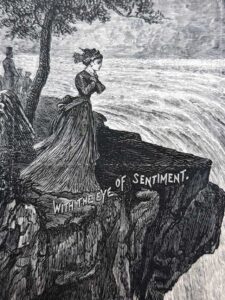 If we could train ourselves to view our surroundings through multiple sets of eyes—through the curious gaze of a child, the weathered perspective of an elder, or the fresh wonder of a newcomer—what richness we might uncover. Imagine the billions of impressions we could gather, each one a thread in the tapestry of our experience, pulling us toward the next moment with a heightened sense of anticipation and urgency. To live this way, with eyes wide open to the infinite possibilities around us, would be to embrace a life brimming with discovery, where every step forward is an invitation to marvel at the world anew.
If we could train ourselves to view our surroundings through multiple sets of eyes—through the curious gaze of a child, the weathered perspective of an elder, or the fresh wonder of a newcomer—what richness we might uncover. Imagine the billions of impressions we could gather, each one a thread in the tapestry of our experience, pulling us toward the next moment with a heightened sense of anticipation and urgency. To live this way, with eyes wide open to the infinite possibilities around us, would be to embrace a life brimming with discovery, where every step forward is an invitation to marvel at the world anew.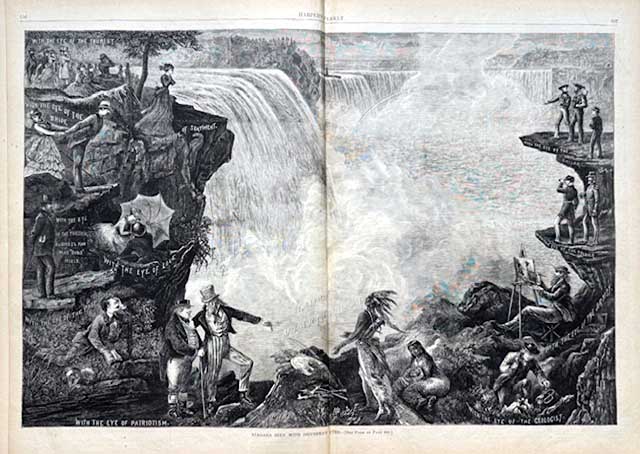
Deal of a Lifetime… Doubling America with the Louisiana Purchase…
September 22, 2025 by Laura Heilenman · Leave a Comment
Everyone loves feeling as if they stuck a great deal! Coming off of Amazon Prime Days, many Americans are probably pretty pleased with their purchases; however, none of our delight can compare with what former Special Envoy James Monroe must have felt as he finalized the deal for the Louisiana Purchase… 3 cents/acre… 828,000 square miles… expanding the breadth of his country … setting the stage to establish a “hands-off” foreign policy doctrine as president 20 years later. Men like Monroe, who influenced our country’s founding by sculpting our future in a series of steps, helped define who America would be some 250 years later. On November 2, 1803, the COLUMBIAN CENTINEL covered the purchase of the Louisiana Territory and the NILES’ WEEKLY REGISTER, Baltimore, Dec. 6, 1823 later covered Monroe’s Annual Message to Congress as President in which he detailed his now famous Monroe Doctrine. I love seeing steps in the sand leading from our county’s founding to our 250th birthday, detailed in newspapers of the day. Well done President Monroe! You found us a GREAT deal!
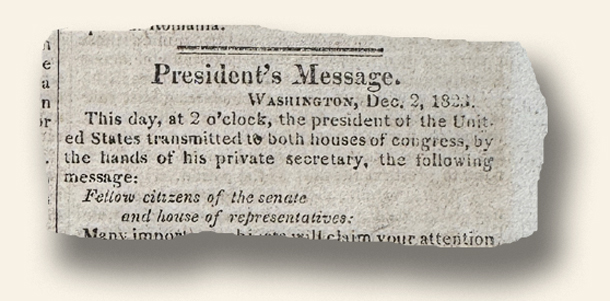
Is it Patriot Day, Patriot’s Day, or are they interchangeable?
September 11, 2025 by GuyHeilenman · Leave a Comment
Is it Patriot Day? Yes. Is it Patriot’s Day? Yes again. Are they interchangeable? If someone had asked me yesterday, I would have thought they were one and the same; but the answer is: No! So, for those like me who thought they were one and the same, I hope what follows clears things up.
 Patriot Day
Patriot Day
Patriot Day is a United States observance held every year on September 11 to honor the nearly 3,000 people who lost their lives in the terrorist attacks on September 11, 2001. Established by a joint resolution of Congress and signed into law in 2002, the day commemorates the victims of the attacks on the World Trade Center, the Pentagon, and United Airlines Flight 93, as well as the first responders who risked and sacrificed their lives. Americans observe the day with moments of silence, memorial services, and the lowering of flags to half-staff as a tribute to national resilience and remembrance.
Shown to the left is a report from the Los Angeles Times, dated Sept. 11, 2001.
Patriot’s Day
Patriots’ Day is a U.S. holiday commemorating the battles of Lexington and Concord, the first military engagements of the American Revolutionary War, fought on April 19, 1775. It originated in Massachusetts in the late 19th century to honor the bravery and sacrifice of colonial militiamen who resisted British forces. The holiday is observed annually on the third Monday in April, primarily in Massachusetts and Maine, with re-enactments, parades, and athletic events like the Boston Marathon. Patriots’ Day serves as a reminder of the American colonies’ fight for independence and the birth of the United States.
The following is a report from The New England Chronicle dated Sept. 7, 1775.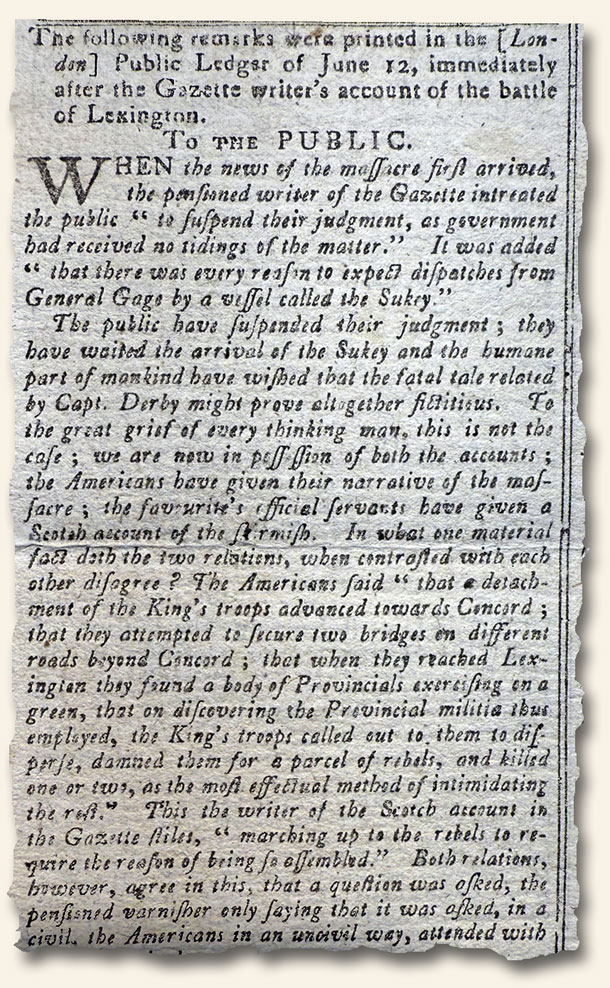
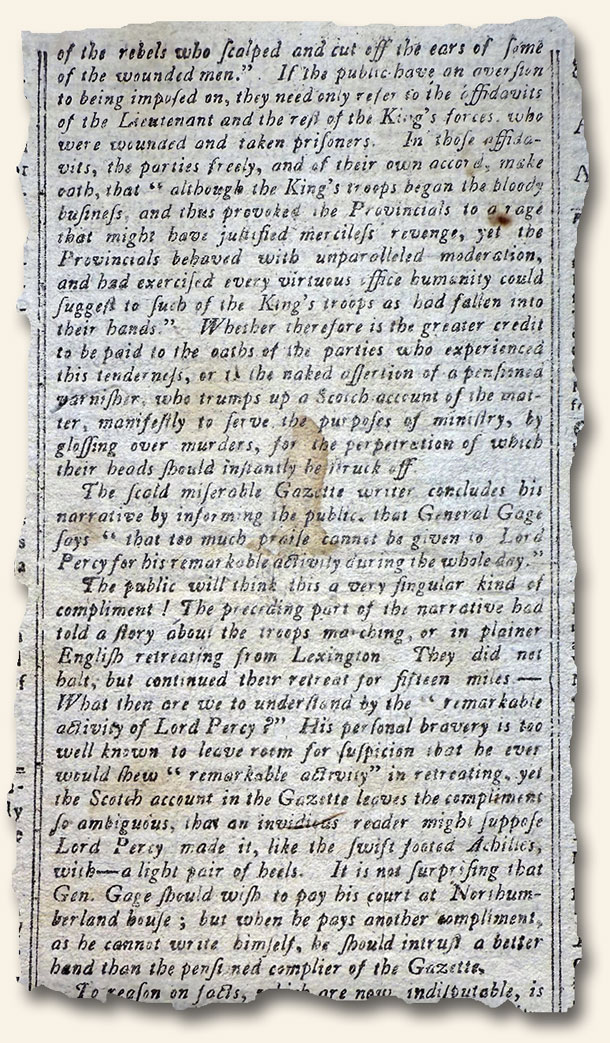
Singers & Songwriters – 1776 edition…
September 8, 2025 by GuyHeilenman · Leave a Comment
Flashback – 1776
“And, the award for the songwriter of the year goes to… ‘wait for it… wait for it…’* … Benjamin Franklin, for his chart-busting mega-hit: “The KINGS own REGULARS, and their TRIUMPH over the IRREGULARS.”
Was there anything this man could not do? I could be wrong, but if those who have explored the life of this amazing forefather were asked to list his talents and accomplishments, I’m guessing that “lyricist” would not make anyone’s list. Yet, although unsigned, the satirical ditty printed in the Pennsylvania Evening Post on March 30, 1776 (shown below) has finally been universally acknowledged as being from his pen (and not just an autopen with his name on it). Furthermore, the fact that it would have likely topped the charts in such an historic year (1776) makes him a shoe-in for eventual entry into the Musicians Hall of Fame and Museum. Sadly, whether through the distraction of competing interests, lack of funding, or perhaps the waning of ongoing inspiration, history has proven him to be classified as a “one-hit wonder”. What a shame; he was off to such a great start.


*Quote borrowed from Ketanji Brown Jackson, honorable Associate Justice of the SCOTUS.
Lead-up to a Nation… as reported in the newspapers of the day (Intro & August, 1775)…
September 5, 2025 by GuyHeilenman · Leave a Comment

Shown below are the first four installments.
The Necessity of Taking Up Arms – Lead-up to a Nation (E1)
The Olive Branch Petition – Lead-up to a Nation (E2)
The Speech of Edmund Burke – Lead-up to a Nation (E3)
England Declares War – Lead-up to a Nation (E4)
We hope you enjoy this year-long trek to the 250th anniversary of The United States through the eyes of those who were fully engaged, first hand. All accounts will be through what they read in the newspapers of the day. After all, as Tim Hughes proclaimed back in 1975: “History is never more fascinating than when read from the day it was first reported.”
A 49 year search comes to an end… The 1765 “Tombstone” issue…
September 1, 2025 by TimHughes · Leave a Comment
There are a number of iconic American newspapers that every collector desires, most are for content alone such as the Declaration of Independence, the Constitution, the assassination of Abraham Lincoln, etc.
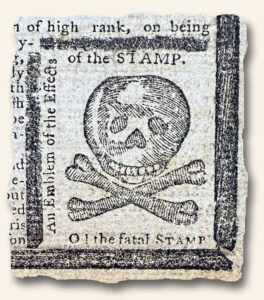 Not many are desired for both historical significance as well as graphic appeal, but such is the case with the Pennsylvania Journal of October 31, 1765. Having been aware of it for many years (photos are found in many high school history books), I had always been in the search for a genuine issue (beware: many reprints exist). I came close about 35 years ago when an institution, which had two in their collection, gave thought to exchanging one with me for an unknown Philadelphia newspaper I had discovered. Ultimately, they opted not to do the swap, so the search was back on.
Not many are desired for both historical significance as well as graphic appeal, but such is the case with the Pennsylvania Journal of October 31, 1765. Having been aware of it for many years (photos are found in many high school history books), I had always been in the search for a genuine issue (beware: many reprints exist). I came close about 35 years ago when an institution, which had two in their collection, gave thought to exchanging one with me for an unknown Philadelphia newspaper I had discovered. Ultimately, they opted not to do the swap, so the search was back on.
It ended earlier this year.
This particular edition, famously known as the “tombstone edition,” used striking visual and textual elements to express colonial outrage over the Stamp Act tax, which required many printed materials, including newspapers, to bear a revenue stamp. This tax directly impacted printers and publishers, placing a heavy economic burden on them and fueling widespread resistance.
As seen in the photos, the masthead featured a skull and crossbones, a powerful symbol representing the “death” of the press under the weight of the Stamp Act. Also, an engraving of a coffin appears at the bottom of the back page, captioned: “The last Remains of the PENNSYLVANIA JOURNAL Which departed this Life, the 31st of October, 1765, Of a Stamp in her Vitals, Aged 23 Years.”
Publisher William Bradford begins the issue with poignant commentary, including: “I am sorry to be obliged to acquaint my readers, that as The Stamp Act is fear’d to be obligatory upon us after the First of November ensuing (the fatal to-morrow) the publisher of this paper unable to bear the burthen, has thought it expedient to stop a while, in order to deliberate whether any methods can be found to elude the chains forged for us…”.
Published just one day before the Stamp Act’s enforcement, this edition cleverly voiced dissent without yet violating the law, making it a strategic act of defiance.
This “tombstone edition” of the Pennsylvania Journal captured this economic strain and transformed it into a public rallying cry.
This edition stands as a vivid example of how the colonial press used creativity to oppose British policies, contributing to the growing revolutionary sentiment. It underscores the critical role newspapers played in shaping public opinion and mobilizing opposition in the years leading up to the American Revolution.
While other newspapers also protested the Stamp Act, the Pennsylvania Journal’s dramatic tombstone imagery made it particularly memorable and influential. It galvanized public resistance, cementing its place as a powerful symbol of defiance in American history.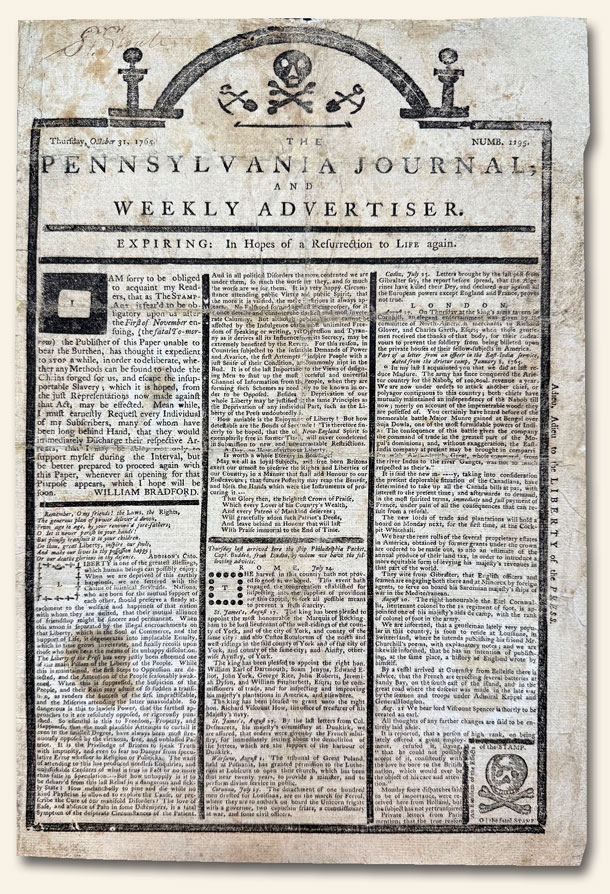
Snapshot 1866 – Slavery: A Wound on the Soul of a Nation…
August 25, 2025 by GuyHeilenman · 1 Comment
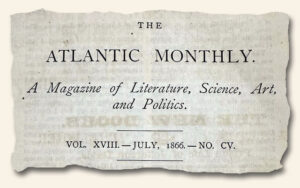 Few institutions in human history have inflicted more suffering or revealed deeper moral failings than slavery. Its cruelty was evident to many, even in its own time, and voices of conscience spoke out with clarity and passion against it.
Few institutions in human history have inflicted more suffering or revealed deeper moral failings than slavery. Its cruelty was evident to many, even in its own time, and voices of conscience spoke out with clarity and passion against it.
Frederick Douglass exposed the hypocrisy of those who justified such inhumanity in the name of religion:
“The man who wields the blood-clotted cowskin during the week fills the pulpit on Sunday, and claims to be a minister of the meek and lowly Jesus.”
Abraham Lincoln, never one to shy away from blunt truths, offered this biting reflection:
“Whenever I hear anyone arguing for slavery, I feel a strong impulse to see it tried on him personally.”
William Lloyd Garrison cut to the heart of the injustice:
“The slave is doomed to toil, that others may reap the fruits.”
And Harriet Tubman, who risked everything to lead others to freedom, distilled its evil to its core:
“Slavery is theft — theft of a life, theft of work, theft of any opportunity to shape one’s own destiny.”
While President Lincoln’s Emancipation Proclamation, issued on January 1, 1863, marked a turning point, the road to slavery’s demise was long, brutal, and soaked in the blood of those who fought to end it. The institution did not go quietly—it clung on with all its bitter force until finally it was defeated, leaving behind a scar but also a renewed hope for the American promise.
This complex and painful chapter was not lost on poet William Cullen Bryant. In 1866, just a year after the Civil War’s end, he shared his reflections in a powerful poem published in the July issue of The Atlantic Monthly. That poem, in its entirety, is presented below—a poignant reminder of what was endured, and what was overcome.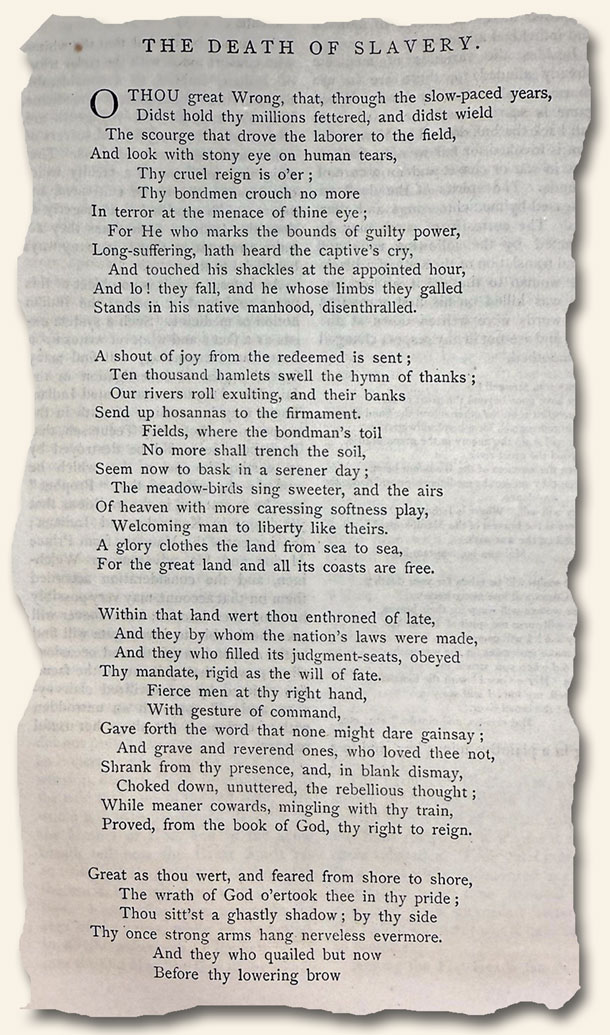
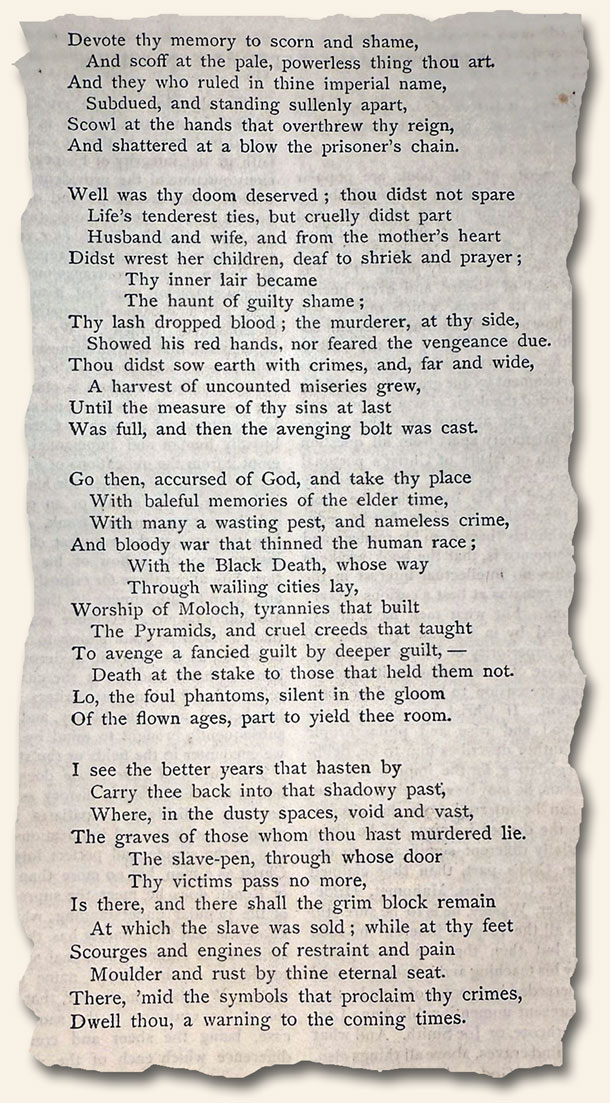
The “Land of Opportunity” as a melting pot… Still a work in progress…
August 18, 2025 by GuyHeilenman · Leave a Comment
The United States has often been considered both a “land of opportunity” and a “melting pot”. It is certainly reasonable to expect that if these are complimentary characteristics, they need to be complimentary (i.e., go hand in hand). While the blending of both will likely be an ongoing pursuit, steady progress over time should remain in focus, necessitating regular self-assessments. One such gauge of progress is to track those who have reached either of the two pinnacles of opportunity… the highest offices of the land: President or Vice-President. While early “outsiders” such Marquis de Lafayette, Albert Gallatin, and Alexis de Tocqueville gave America a glowing report card in regard to our pursuit, the reality is, many start well but eventually grow weary or lose focus. So, how are we doing?
This very question came to mind as I viewed the front page of a recent acquisition – an issue of the National Post (Canada) dated August 8, 2000. It had a full banner headline which surprised me: “GORE FIRST TO PICK JEWISH RUNNING MATE”. Until the 21st century, had the U.S. never had a Jewish-American on a presidential ticket for a major political party – let alone one who had served as either VP or POTUS? I guess I should have known this, but to be honest, I’m still waking up to such things. So, digging a little deeper, I discovered that whereas the ethic groups most prevalent in America during its early, formative period were a healthy blend of English, Irish, African, Germanic, Jewish, and Scottish, only those within the melting pot with a Jewish heritage have yet to reach the top steps of the ladder labeled “Land of Opportunity”. Interesting.
While there are many ways to measure growth… and whereas those with slavery in their family tree have had more than their fair share of roadblocks along their opportunistic trek, rather than be discouraged, we need to keep assessing honestly and responding intentionally. As for me, I’m thankful for newspapers like the National Post which serve as a reminder of the quest before us.
An historic broadside with a connection to early newspapers… revisiting “The Gerry-Mander”…
August 7, 2025 by TimHughes · Leave a Comment
Shown below the following video is a reposting of Timothy Hughes’ original post regarding “The Gerry-Mander”. We are revisiting the topic due to current events. We hope you enjoy.
Although we just discussed the historic broadside, “The Gerry-Mander”, a few days ago, since it was initially part of Timothy Hughes’ personal collection, we thought it might enjoy hearing from him directly. Enjoy.
From Tim…
Many years ago I had access to a very unusual broadside (single sheet, printed on one side only) titled: “Natural And Political History of THE GERRY-MANDER! In Two Chapters…..With Cuts.” Although it was not a newspaper, which was always my focus, a little investigation showed it had a newspaper collection. It would not be until many years later that I discovered how historically significant it really was.
“Gerrymander” is an interesting term that came into being in 1812 at a meeting of Federalist political leaders and newspapermen in Boston. Complaints about the efforts of their Republican opponents to rig state elections by altering voting districts led artist Elkanah Tisdale to add a head and wings to an outlined map of a new senatorial district in Essex County and name it the “gerrymander” after the leader of the Jeffersonians, Governor Elbridge Gerry. The cartoon shocked the public and proved very effective. Gerrymander has since become embedded in the political lexicon of America.
 This broadside we offer is described by dealer Barry Lawrence Ruderman as a “Rare political broadside featuring the first political cartoon in American history to visualize and satirize gerrymandering, one of the most enduring distortions of democratic representation…”.
This broadside we offer is described by dealer Barry Lawrence Ruderman as a “Rare political broadside featuring the first political cartoon in American history to visualize and satirize gerrymandering, one of the most enduring distortions of democratic representation…”.
As seen in the photos, this broadside pairs two woodcut maps with satirical letterpress text mocking the 1812 Massachusetts Senate redistricting law. The cartoon appeared in the Boston Gazette in March 1812, and quickly spread.
The left woodcut depicts the now-famous creature with wings, claws, and a serpent-like neck, labeling the towns it distorts. The right side features a straightforward district map of Essex County showing the two senatorial districts under the new law. The surrounding text is divided into “Natural History” and “Political History.” The first, reprinted from the Gazette, invents a monstrous genealogy for the gerrymander; the second details the law’s consequences—particularly how the Democratic-Republicans expanded their Senate majority from 21–19 to 29–11 despite losing the popular vote.
The American Antiquarian Society tentatively dates this broadside printing to between 1813 and 1822, the latter date coinciding with renewed controversy around redistricting. The cartoon here is virtually identical to the original Gazette version, suggesting either reuse of the block or a careful recutting of it.
Everything about this broadside makes this a landmark artifact of political commentary and electoral history in the United States.
It measures 18 by 20 inches, has minimal foxing, and is in nice condition. One dealer offers this very same broadside for $24,500.




